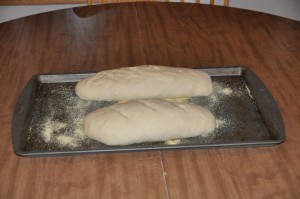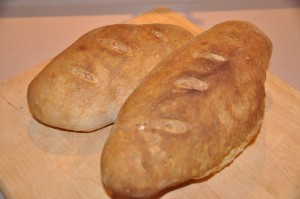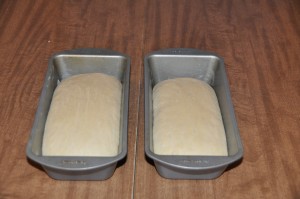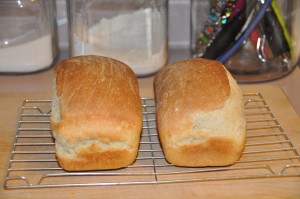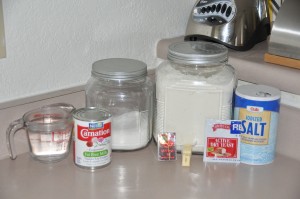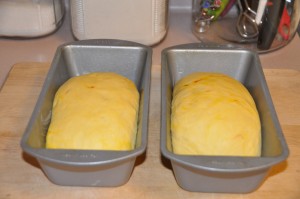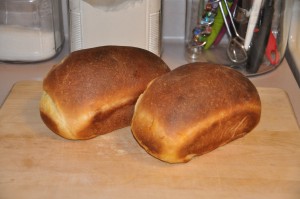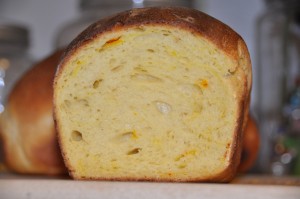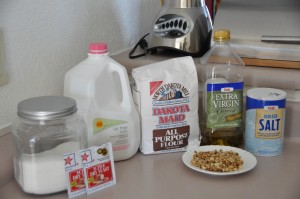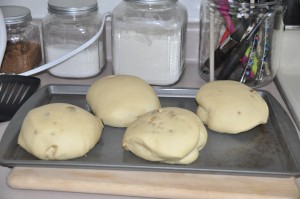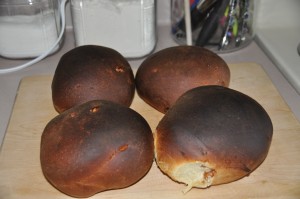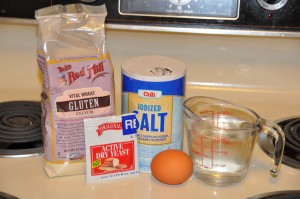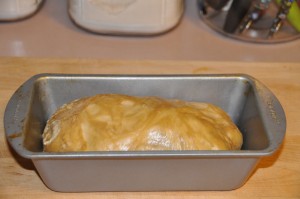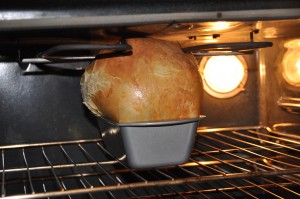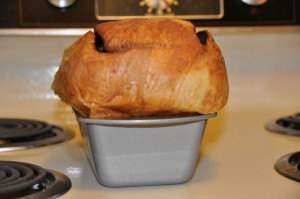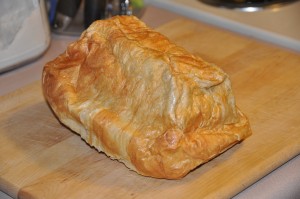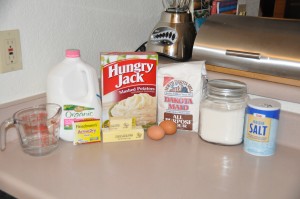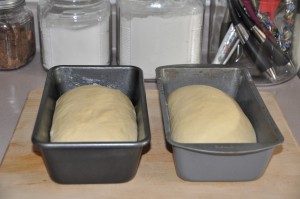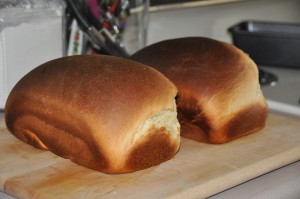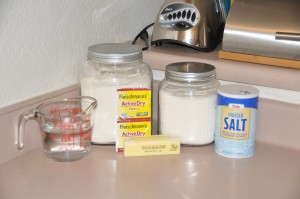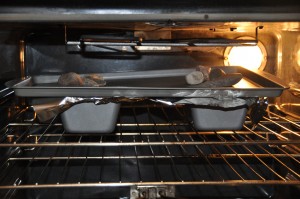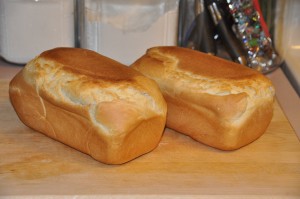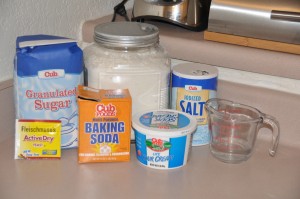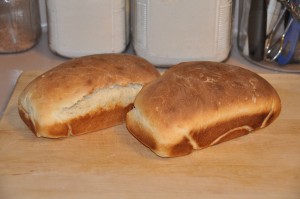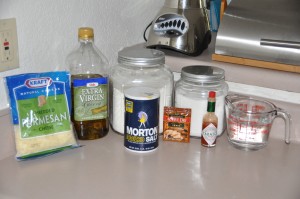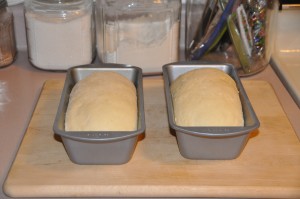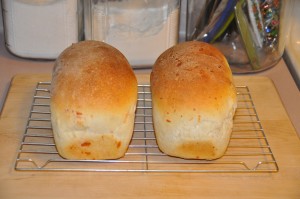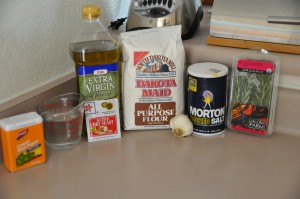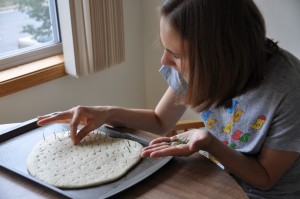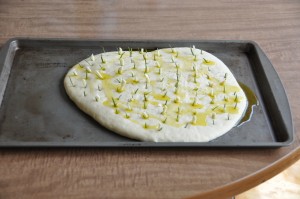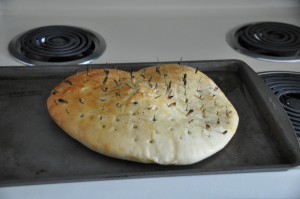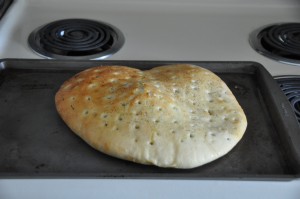“Despite my own feeling that sourdough bread is much overrated and is difficult to perfect at home, I am including one recipe in this collection because interest in the subject is so tremendous…Certainly it is just as unpredictable as Salt-Rising Bread, and I am not sure it is worth the trouble. I would much rather have you spend your time producing the Buttermilk White Bread or some of the rye breads. But for those who like a challenge, here it is.”
-James Beard, Beard on Bread
Exactly one year ago, I started the Brooks Bakes Bread project. Today, after a week-long process of creating a starter, I baked my final recipe: Sourdough Bread. Thanks to Beard’s warnings, I put this one off until the very end.
Last Monday evening (March 19), I mixed milk, water, sugar, salt, and flour together to form a starter. By Wednesday morning, the starter was bubbling and smelled noxious (Beard warns “if it really takes, it can drive you right out of the room” and he wasn’t kidding) and I mixed in yeast and more water.
Every morning, holding my breath, I’ve been stirring the starter. According to Beard, “It will continue to smell to high heaven.” Since our lease ends at the end of the month, our apartment was shown several times over the past week. I feel a bit self-conscious about people’s impression of my housekeeping!
Last night, I created a sponge by combining one cup of starter with more water, sugar, salt, and flour. After letting it rise for nearly a day, I finally began preparing my dough tonight.
I mixed still more water, yeast, and flour into the sponge, and kneaded the dough with more flour until I made a firm dough. After one and a half hours, I punched down the dough and then let it rise again for 45 minutes. Then I shaped the dough into two French-style loaves and let it rise for a third time for another 45 minutes.
I baked the loaves at 400 degrees for 30 minutes, with a pan of boiling water on the lower rack of the oven.
My loaf shaping skills still need a little work, but I ended up with two respectable loaves of Sourdough Bread. My final recipe was a success: Sourdough Bread is surprisingly mild for how pungent the starter smelled, and the crust was amazing.
After a year of baking bread, I no longer would describe myself as a novice bread maker. I’ve tried everything from doughnuts to flat bread topped with lamb, and developed my skills along the way.
What I love about bread (and what I suspect James Beard loved too) is that you can make a fairly decent loaf on your first try, but you can spend a lifetime perfecting it and trying infinite variations. My bread baking will go on a hiatus for now, while I finish house renovations, settle into a new job, and eat down the impressive stash of bread in the freezer. But I know that I will always come back to baking bread, however life unfolds. In the words of James Beard, “There is no smell in the world of food to equal the perfume of baking bread and few greater pleasures in eating than sitting down with a slice of freshly baked bread, good butter, and a cup of tea or coffee.”
Thank you to everyone who has followed along and provided encouragement along the way. And most of all, thanks to Mike for always believing in me and even more importantly, helping me eat all of that bread!

